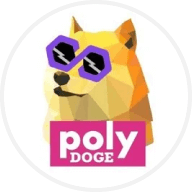MXC (MXC), formerly known as MetaX Connect, is a groundbreaking project at the forefront of transforming data connectivity. By harnessing the potential of blockchain technology, it establishes a decentralized network that facilitates secure and efficient data transfer, driving advancements across multiple sectors. Through its native token, MXC, the platform introduces various enticing features and rewards to engage users and promote innovation.
What is MXC?
MXC is a decentralized blockchain platform dedicated to improving data connectivity. Its primary objective is to connect the physical and digital realms by enabling secure and seamless communication across different devices. By prioritizing privacy, trust, and interoperability, MXC provides a solid foundation for emerging technologies such as the Internet of Things (IoT) and smart cities. Its robust infrastructure facilitates efficient data transfer and supports the growth and innovation of various industries.
The MXC team
MXC has established the MXC Foundation to oversee and protect the project's interests. Xin Hu, the CEO of MXC, brings extensive expertise in IoT applications, including healthcare, smart cities, and consumer electronics, with over a decade of experience. Hu led a team that designed an award winning product recognized at Consumer Electronics Show (CES) 2016 for its innovation. Aaron Wagener, a co-founder of MXC, serves as the COO, contributing to the strategic operations and development of the project. Hu and Wagener form a strong leadership team driving MXC's vision and growth.
How does MXC work?
MXC operates on a distinctive architecture that synergizes blockchain technology with low-power wide area network (LPWAN) protocols. LPWAN facilitates long-range and energy-efficient communication among connected devices, ensuring optimized data transmission.
By integrating LPWAN and blockchain, MXC enhances security, immutability, and decentralization while maintaining scalability. The platform employs a hybrid consensus mechanism that combines Proof of Stake (PoS) and Proof of Authority (PoA) to achieve efficient and reliable consensus.
MXC’s native token: MXC
MXC's native token, MXC, functions as the core cryptocurrency within the MXC ecosystem. It holds significant importance in incentivizing and rewarding network participants while facilitating the seamless operation of the platform. MXC token holders can stake their tokens, actively engage in governance processes, and contribute to the network's stability and expansion, thereby earning rewards for their valuable contributions.
MXC tokenomics
MXC tokenomics ensures scarcity and potential value appreciation through its finite supply. It aligns the interests of network participants and token holders by allocating a portion of tokens to community incentives, ecosystem development, and team members. This strategic distribution drives adoption and supports the project's sustainable growth.
How to stake MXC
Staking MXC tokens enables users to secure the network and earn rewards actively. Users who lock their tokens for a specified period contribute to network stability and governance. In return, they receive staking rewards based on the duration and amount of tokens staked. This provides both a passive income opportunity and strengthens the MXC ecosystem.
MXC token use cases
MXC token is a utility token within the platform, enabling transactions and covering service fees. Token holders can actively participate in voting and governance processes, influencing the future development of MXC. Additionally, holding the token may unlock exclusive benefits and privileges, fostering an engaged and active community of users.
MXC token distribution
MXC distribution is as follows:
- 60 percent was allocated for public sale.
- 20 percent was reserved to cover the team's operational expenses.
- 20 percent is allotted to the MXC Foundation.
MXC empowering the future of data connectivity with blockchain
MXC is at the forefront of revolutionizing data connectivity through blockchain technology. By harnessing the power of blockchain and LPWAN protocols, MXC provides a decentralized solution to the challenges faced by industries. It enables secure, efficient, and interoperable data transfer. The MXC token incentivizes network participants, promoting engagement and ecosystem growth. With a dedicated team and innovative approach, MXC has the potential to reshape the data economy and pave the way for a connected future.












